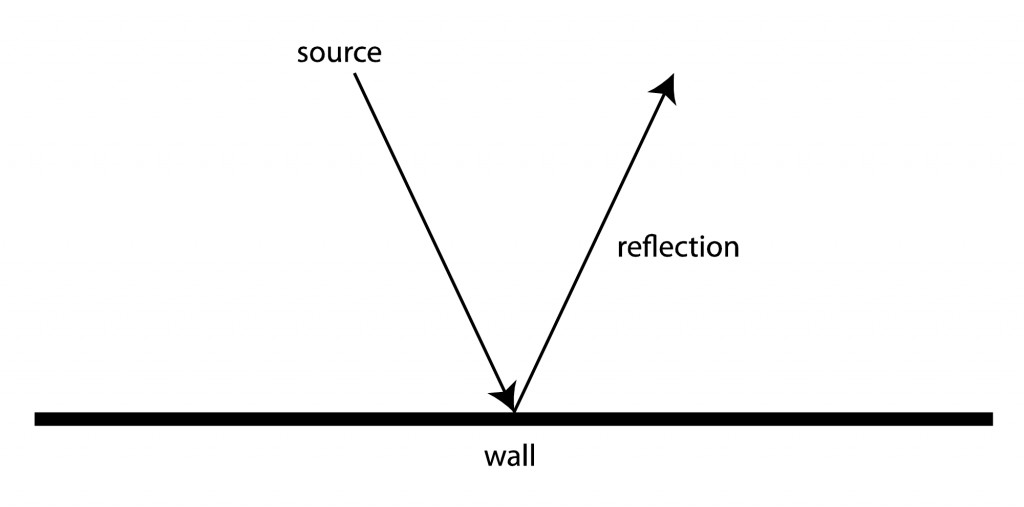

Student will understand the First and Second Laws of Reflection.įirst Law of Reflection: The incident wave, the reflected wave, and the normal at the point of incidence lie on the same plane. In what type of reflection angle of incidence is equal to the angle of reflection Hint In this question think of the condition in which the light is incident upon a surface that is not smooth or rough, the angle of incidence is equal to the angle of reflection when we are dealing with smooth surfaces.

The angle which the incident sound waves makes with the normal is called the angle of incidence, "i". Angle of incidence Angle of reflection is true experimentally. For all practical purposes, the point of incidence and the point of reflection are the same point on the reflecting surface.Ī perpendicular drawn on the point of incidence is called the normal. The sound waves bouncing back from the reflecting surface are called reflected sound waves. The sound waves that travel towards the reflecting surface are called the incident sound waves. They may appear unequal when the surface that light reflects off of is unequal but the law holds true when. What are incident and reflected sound waves? The first law of reflection states that when light is reflected from a surface, the angle of incidence is always equal to the angle of reflection, where both the angles are measured from the path of the light to the normal to the surface. When light reflects from a smooth surface such as that of metal or glass or water, the incoming angle of incidence is equal to the outgoing angle of reflection. The waves are called the incident and reflected sound waves. When sound travels in a given medium, it strikes the surface of another medium and bounces back in some other direction, this phenomenon is called the reflection of sound. The angle of reflection is the angle formed between the normal and the reflected laser is called angle of deflection in the normal is it is a line drawn. How do we describe the reflection of sound? The angle of incidence is the angle between the incident ray. The law for reflection is the same as that of light, ie., the angle of incidence of a sound wave equals the angle of reflection, just as if it were produced by a 'mirror image' of the stimulus on the opposite side of the surface. The law of reflection states that the angle of incidence is equal to the angle of reflection. If a sound is not absorbed or transmitted when it strikes a surface, it is reflected. The speed of sound is determined by the properties of the air, and not by the frequency or amplitude of the sound. Sound propagates through air as a longitudinal wave. Common examples include the reflection of light, sound and water waves. Reflection is the change in direction of a wavefront at an interface between two different media so that the wavefront returns into the medium from which it originated. The image appears to be in the direction the rays are coming from when they enter the eyes.To verify the laws of reflections of sound. The angle of incidence is ‘x’ and angle of reflection is ‘y’, as shown. Let B be a point on ray OB and let ON be the normal to the mirror at O.

The two rays shown are those that strike the mirror at just the correct angles to be reflected into the eyes of the person. angel of incidence equal angel of reflection Let a right ray AO from a source A strike a plane mirror at O and reflected as ray OB. \( \newcommand\): Our image in a mirror is behind the mirror.


 0 kommentar(er)
0 kommentar(er)
